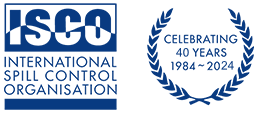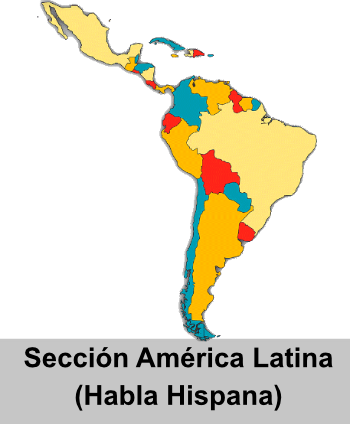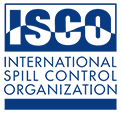HNS Protocol
SUMMARY
Protocol on Preparedness, Response and Co-operation to Pollution Incidents by Hazardous and Noxious Substances, 2000 (HNS Protocol)
Adoption: 15 March 2000
Entry into force: 14 June 2007
Introduction
The Protocol on Preparedness, Response and Co-operation to pollution Incidents by Hazardous and Noxious Substances, 2000 (HNS Protocol) follows the principles of the International Convention on Oil Pollution Preparedness, Response and Co-operation, 1990 (OPRC) and was formally adopted by States already Party to the OPRC Convention at a Diplomatic Conference held at IMO headquarters in London in March 2000.
Entry into force was on 14 June 2007.
Like the OPRC Convention, the HNS Protocol aims to provide a global framework for international co-operation in combating major incidents or threats of marine pollution. Parties to the HNS Protocol are required to establish measures for dealing with pollution incidents, either nationally or in co-operation with other countries. Ships are required to carry a shipboard pollution emergency plan to deal specifically with incidents involving HNS
HNS definition
HNS are defined by reference to lists of substances included in various IMO Conventions and Codes. These include oils; other liquid substances defined as noxious or dangerous; liquefied gases; liquid substances with a flashpoint not exceeding 60°C; dangerous, hazardous and harmful materials and substances carried in packaged form; and solid bulk materials defined as possessing chemical hazards.
The HNS Protocol ensures that ships carrying hazardous and noxious liquid substances are covered, or will be covered, by regimes similar to those already in existence for oil incidents.
In 1996, IMO adopted the International Convention on Liability and Compensation for Damage in Connection with the Carriage of Hazardous and Noxious Substances (HNS) by sea, which provides for a compensation and liability regime for incidents involving these substances (it has not yet entered into force). Liability and compensation regimes for oil pollution incidents are covered by the 1992 Protocols to the International Convention on Civil Liability for Oil Pollution Damage, 1969 and the International Convention on the Establishment of an International Fund for Compensation for Oil Pollution Damage, 1971.
HNS Convention
International Convention on Liability and Compensation for Damage in Connection with the Carriage of Hazardous and Noxious Substances by Sea (HNS)
Adoption: 3 May 1996; Not in force; superseded by 2010 Protocol: Adoption: 30 April 2010; Not yet in force
The HNS Convention was adopted by an international conference in 1996 and is based on the highly successful model of the Civil Liability and Fund Conventions which cover pollution damage caused by spills of persistent oil from tankers. As with the original oil pollution compensation regime, the HNS Convention will establish a two-tier system for compensation to be paid in the event of accidents at sea, in this case, involving hazardous and noxious substances such as chemicals. However, it goes further in that it covers not only pollution damage but also the risks of fire and explosion, including loss of life or personal injury as well as loss of or damage to property.
Tier one will be covered by compulsory insurance taken out by shipowners, who would be able to limit their liability. In those cases where the insurance does not cover an incident, or is insufficient to satisfy the claim, a second tier of compensation will be paid from a fund, made up of contributions from the receivers of HNS. Contributions will be calculated according to the amount of HNS received in each Party in the preceding calendar year.
HNS are defined by reference to lists of substances included in various IMO Conventions and Codes. These include oils; other liquid substances defined as noxious or dangerous; liquefied gases; liquid substances with a flashpoint not exceeding 60°C; dangerous, hazardous and harmful materials and substances carried in packaged form; and solid bulk materials defined as possessing chemical hazards. The Convention also covers residues left by the previous carriage of HNS, other than those carried in packaged form.
The Convention defines damage as including loss of life or personal injury; loss of or damage to property outside the ship; loss or damage by contamination of the environment; the costs of preventative measures and further loss or damage caused by them.
The Convention introduces strict liability for the shipowner and a system of compulsory insurance and insurance certificates.
By 2009, the 1996 HNS convention had still not entered into force, due to an insufficient number of ratifications. A second international conference, held in April 2010, adopted a Protocol to the HNS convention (2010 HNS Protocol) that was designed to address practical problems that had prevented many States from ratifying the original Convention.
States are being urged to ratify the 2010 Protocol. Together with the IOPC Funds and ITOPF, IMO has produced a six-page brochure that explains to States the purpose and benefit of the HNS Convention and encourages IMO Member States to take the next steps to ratify or accede to the Convention.
Once the 2010 HNS Protocol enters into force, the 1996 Convention, as amended by the 2010 Protocol, will be called “the International Convention on Liability and Compensation for Damage in Connection with the Carriage of Hazardous and Noxious Substances by Sea, 2010.
Limits of liability under the 2010 Protocol
Under the 2010 Protocol, if damage is caused by bulk HNS, compensation would first be sought from the shipowner, up to a maximum limit of 100 million Special Drawing Rights (SDR).
Where damage is caused by packaged HNS, or by both bulk HNS and packaged HNS, the maximum liability for the shipowner is 115 million SDR.
Once this limit is reached, compensation would be paid from the second tier, the HNS Fund, up to a maximum of 250 million SDR (including compensation paid under the first tier).
The Fund will have an Assembly, consisting of all States Parties to the Convention and Protocol, and a dedicated secretariat. The Assembly will normally meet once a year.
Entry into force criteria for the Protocol
The 2010 Protocol will enter into force eighteen months after the date on which the following conditions are fulfilled:
(a) at least twelve States, including four States each with not less than 2 million units of gross tonnage, have expressed their consent to be bound by it; and
(b) the Secretary-General has received information in accordance with article 20, paragraphs 4 and 6, that those persons in such States who would be liable to contribute pursuant to article 18, paragraphs 1(a) and (c), of the Convention, as amended by this Protocol, have received during the preceding calendar year a total quantity of at least 40 million tonnes of cargo contributing to the general account.
HNS Fund
It has generally been agreed that it would not be possible to provide sufficient cover by the shipowner liability alone for the damage that could be caused in connection with the carriage of HNS cargo. This liability, which creates a first tier of the Convention, is therefore supplemented by the second tier, the HNS Fund, financed by cargo interests. The Fund will become involved:
(1) because no liability for the damage arises for the shipowner. This could occur, for example, if the shipowner was not informed that a shipment contained HNS or if the accident resulted from an act of war;
(2) because the owner is financially incapable of meeting the obligations under this Convention in full and any financial security that may be provided does not cover or is insufficient to satisfy the claims for compensation for damage, or
(3) because the damage exceeds the owner’s liability limits established in the Convention.
Contributions to the second tier will be levied on persons in the Contracting Parties who receive a certain minimum quantity of HNS cargo during a calendar year. The tier will consist of one general account and three separate accounts for oil, liquefied natural gas (LNG) and liquefied petroleum gas (LPG). The system with separate accounts has been seen as a way to avoid cross-subsidization between different HNS substances.
The Fund will have an Assembly consisting of all States which are Parties and a Secretariat headed by a Director. The Assembly will normally meet once a year.
HNS and the CLC/Fund Conventions
The HNS Convention excludes pollution damage as defined in the International Convention on Civil Liability for Oil Pollution Damage and the International Convention on the Establishment of an International Fund for Compensation for Oil Pollution Damage, to avoid an overlap with these Conventions.
However, HNS covers other damage (including death or personal injury) as well as damage caused by fire and/or explosion when oils are carried.
Special Drawing Rights Conversion Rates
The daily conversion rates for Special Drawing Rights (SDRs) can be found on the International Monetary Fund website at http://www.imf.org/.





